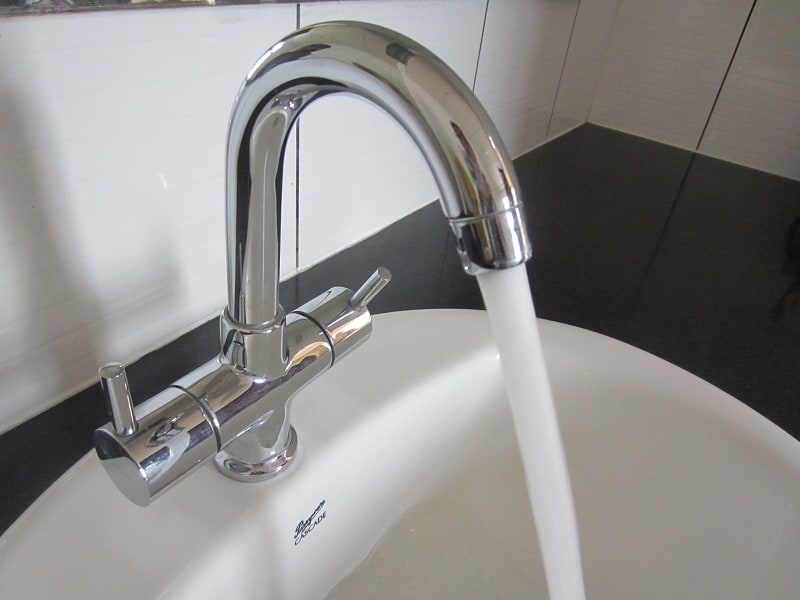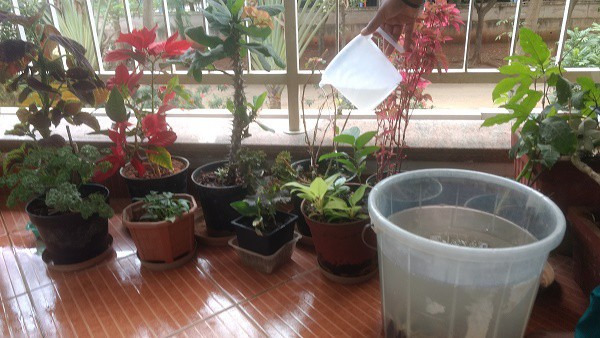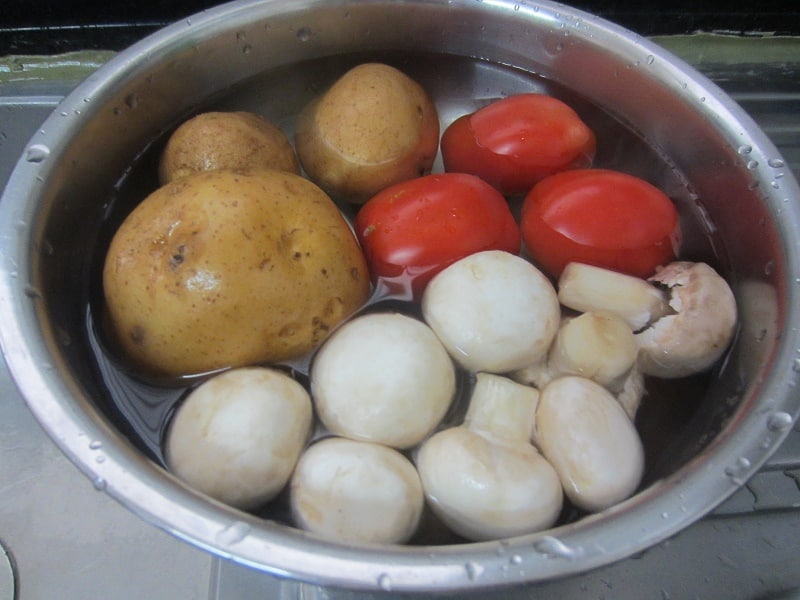Come summer, newspapers across the country faithfully remind us of the dire state of the depleting water-tables in our cities, touching scarier levels each year. Living in our ivory towers as we do, water tankers shield us from reality. Some believe that the rains will naturally resolve matters. The stark reality is that mismanagement of water-resources, illegal bore-wells, rampant misuse of potable water for construction, disrupted storm-water drains/water channels – all ensure that groundwater recharge is severely impacted.
With a spiralling demand-supply gap, the water problems of every Indian city are set to assume nightmarish proportions unless immediate action is taken at the city, community and individual levels. Action must be taken on a war footing by all authorities, and communities must invest in rainwater harvesting and sewage treatment plants with prudent usage of water.
But meanwhile, every resident MUST do his bit to save water, and what better day to begin than World Water Day! Here, from a truly frugal water-user, are tips to cut usage by 70-80%, no exaggeration. If all city-dwellers follow this, daily demand can drastically drop.
Why am I writing this?
First, my credentials in writing such an article – I bathe with 6 mugs of water. Impressed? Hold on; that is on a day I wash my hair as well, otherwise it is 3 mugs, no exaggeration. I am also a compulsive recycler of water and truly stingy with use of fresh water, with no compromise whatsoever in the end-result of my cleaning!
I learnt to value water during severe childhood shortages in sweltering Chennai. I could bathe daily only if I used less, so learnt to manage with just one mug of water! Post-shortage, I confess that I was back to the 3-bucket baths more suitable for protracted bathroom singing.
Decades later, I chanced upon a chilling presentation describing a waterless world which truly shook me into treating water as the precious resource it is, truly more precious than gold or jewels. Titled ‘Letter-in-the-year-2070’, it is in the must-see category. Please view it to see the horror described and you will not waste another drop again:
Spot check of your usage
Let’s start with a quick check of your water habits. The next time you open a tap, check how wide the tap is open. Most open it full-flow by default. What is worse, water continues to run while hands/faces are being soaped or teeth brushed. My contention is that you can do with 1/10th of the full tap flow for most uses – try it!
I have named this principle of minimum usage ‘ecowaternomics,’ as it conveys beautifully the concept of economising on water usage so you use only the bare minimum that you actually need, and not as much as is abundantly available.
Get started
My aim is to get you to STOP WASTING WATER in various ways you may not even realise, and then passionately START SAVING WATER, while also influencing others to do the same.
There are two simple principles that can transform your water usage:
1) USE LESS
2) REUSE MORE.
The first pushes you to practice minimum use at all times through a) minimum flow b) taps closed when flow not needed so no running water. The second forces you to adopt a little-used but truly effective strategy – never let water down a drain if it is good for something else. This involves recycling water in ways you never imagined possible so you consume less fresh water. Combining these two principles, you save unimaginable amounts which all add up – because literally, every drop counts.
Learn to reduce
Take my ‘Ecowaternomics’ minimum water challenge: establish that bare minimum you need for washing/shaving/bathing and drastically cut down on daily usage for these. The simplest tip for this is to use the lowest flow possible (adding on aerators to normal taps helps too).
Tap off while soaping, absolutely no running water. Using more soap/shampoo/detergent/ toothpaste than required means more water needed to rinse. Reduce usage, discover how little soap and water you really need, rehash old habits with no change in the end-result!
When rinsing, let water from one hand run onto the other – you use still less this way. While brushing teeth, use your second hand to keep turning the tap on/off (push-cock taps work well here). Experiment, recalibrate, shock yourself.
I started testing myself while washing hands by using an empty 65ml Yakult container as a measure – it initially worked for one hand wash, now it works twice! Challenge yourself – do the 3-mug bath. And if you believe that a bucket/mug consumes less, yes and no. You may restrict your bath to 1 bucket, but a 25 litre bucket when 3 litres will suffice?
While flushing, no full-flush if half-flush will suffice. Avoid excess tissue paper or cigarette butts down the toilet, use a bin. A brick in the tank reduces usage while flushing. Tricks galore, discover them. Start being stingy, transform habits, slash usage. All this soon becomes second nature and quite likely you will not be able to do it any other way.
Learn to reuse
First let me establish the need through a simple question: you wouldn’t bathe with mineral water, would you? Of course not, why waste expensive water of far higher purity than you need for bathing, when simple tap water can serve this purpose? Correct, and by that very same logic, why waste perfectly good fresh water to wash dirty mops or rinse dirty dishes or water plants, when there is a lower-order water that serves the purpose perfectly well?
Never thought about this before? Welcome to the concept of water recycling, another trick in my Ecowaternomics bag!
In this framework, fresh water must be ONLY put to those uses that need water in its purest form – which are literally just cooking and drinking. The second order of water needs include bathing, washing face/hands/teeth, shaving, washing clothes, dishes, vegetables/fruits, etc.
All these can be done with recycled water such as RO waste water, fresh water that needed to be run just because the temperature was not right (pre-shave or pre-shower), and which thousands shockingly just let flow down a drain while I gather two out of my three mugs for bathing from this source, or leftover/stale water from drinking glasses or school water bottles (that most maids simply pour down the sink!)
Start collecting and reusing these perfectly usable water sources. Only once these are used should you open the taps for fresh water again.
The third and last set of water needs technically does not need clear or clean water, and can be performed with soapy, soiled or muddy water. Soapy water from washing machines or clothes bucket-wash or even hand-washing can be reused for washing mops, shoes/slippers, driveways, combs/brushes, etc.
Soiled water from washing dals/rice/vegetables can be reused for rinsing dirty dishes or watering plants. Muddy water from swabbing the floor (which is RO waste water!) can be reused for watering plants – just remember to skip the phenyl. So we’re no longer just reusing water here, but reusing it twice over! You will discover ways aplenty once you apply basic logic and value reused water. Don’t wait for the water in your taps to dry up to discover the benefits of recycling, start now!
So there you are – tons of simple ways to save water. I hope you are eager to try out these basic principles of my ecowaternomics theory, which work fantastically in practice too!
|
I recently requested a new maid who had the tap open on full blast to reduce the flow, and her reply was “Oh, you have water problems in this building?” A true reflection of our disregard for saving water as a value and as a daily habit year round, but something reserved for summer shortages or for those who are unfortunate not to have water flowing in their pipes, with the corollary that abundant flow means wastage is fine.
Some may believe this daily rationing and recycling is an overkill and not called for. My contention is that if all of us did more of this now, generations to come would not need to do this all the time. We belong to that generation that can either reverse the complete destruction of our planet or condemn it by our inaction.
The title of this piece deliberately did not say ‘an SOS call to save water on World Water Day’. This is not with intent to create a buzz on just this one day, with water wasted the rest of the year. It is about making prudent use of this precious resource each and every day as an ingrained habit, one that can truly be life-altering for our future generations and for the planet, yet requiring only minor alterations in daily routines for us and yes, a little extra effort. Small changes with a huge impact. Let’s get started, people… there is much water to be saved! And we belong to that last generation that can make a difference.



Very well written and well researched. Odette has proved that she does not merely lend lip service to water conservation but actually practises everything that she preaches.